The Libertarian Crack-Up and Conflicting American Ideas of Liberty
In which I build on David Hackett Fischer's work to the anomaly of MAGA libertarians. Also, my latest experience with AI-generated illustrations.
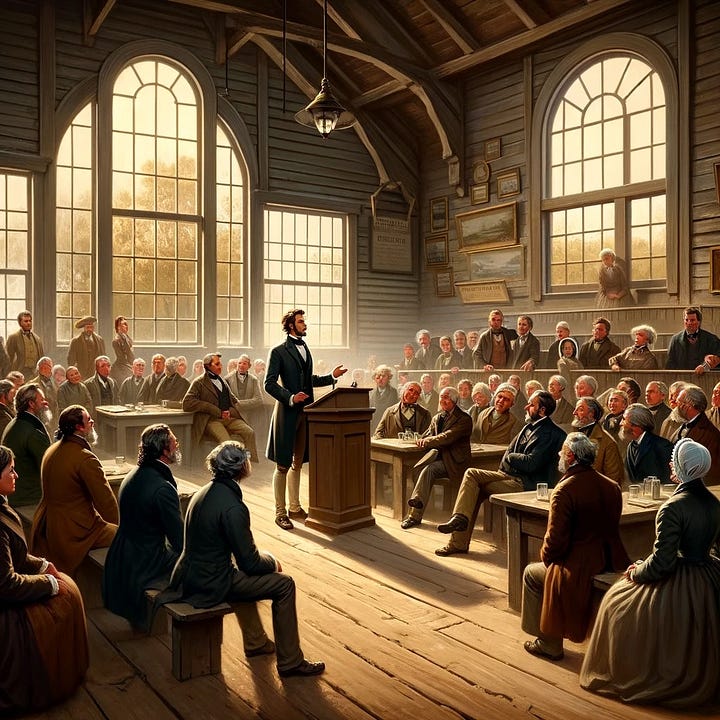
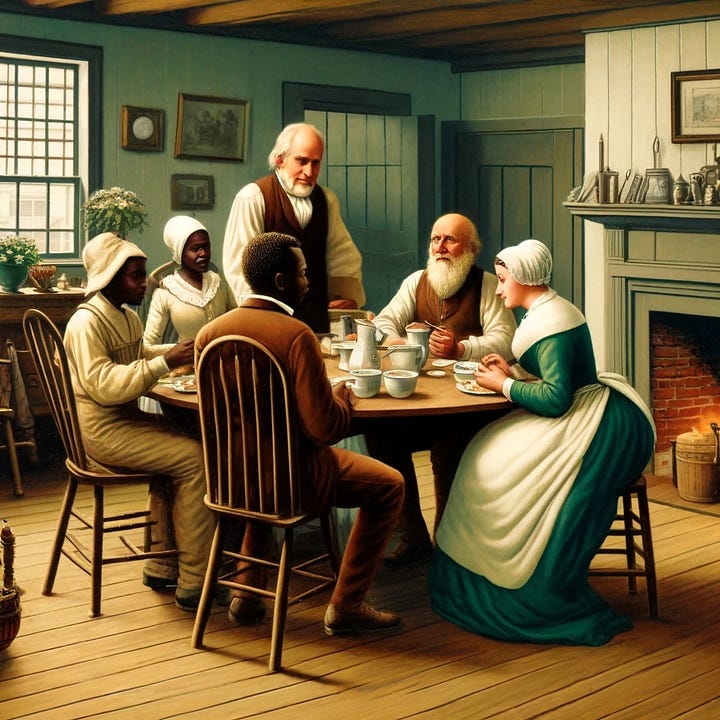
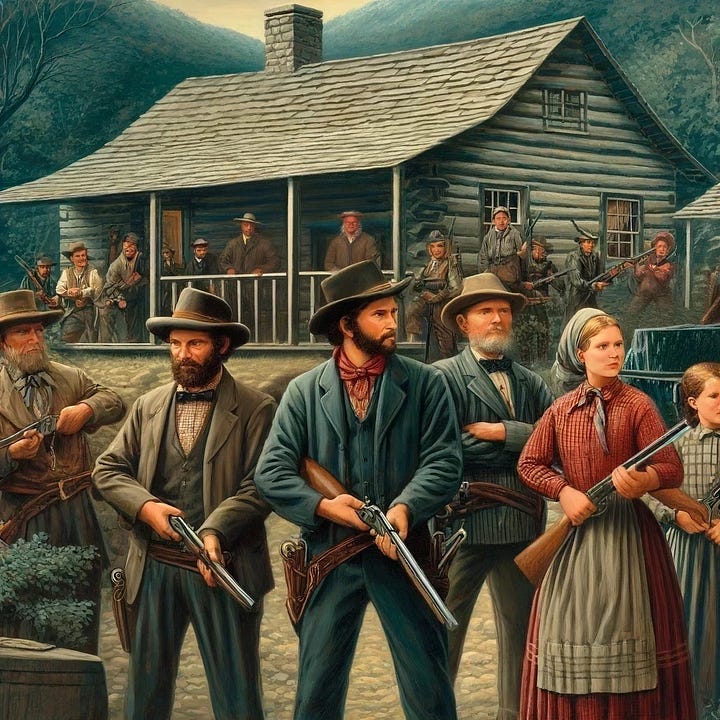
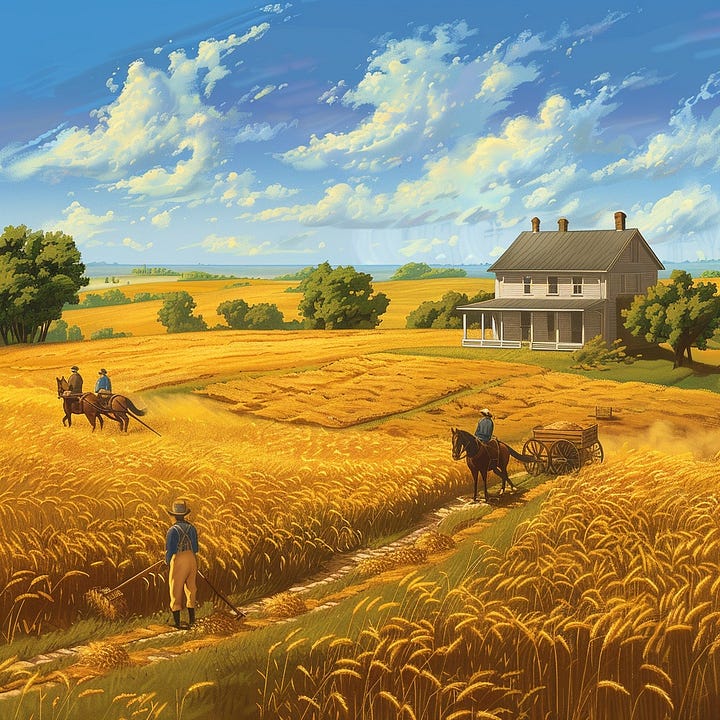
News that Donald Trump will address the Libertarian Party convention has some people saying, Huh? (Official LP press release here.) In a column titled “Are Libertarians MAGA-Adjacent Now?” centrist Democrat Ed Kilgore writes:
how much common ground can there exist between libertarian opponents of government power at home and abroad and a former president who oozes authoritarianism from his pores? We’re talking about a man who once famously said that Article II of the U.S. Constitution gave him as president the right “to do whatever I want,” and who is openly and regularly threatening to use every agency of federal power to smite his many enemies if he’s returned to the White House. After observing his initial performance in office, the Libertarian Party put out a statement in 2018 that said, “Whatever libertarian impulses Trump the candidate seemed to have, his actual performance as president stands in stark contrast. Donald Trump is the opposite of a Libertarian.” That sounds about right.
What’s going on? How could people who supposedly believe in liberty and limited government cozy up to someone as instinctively authoritarian (and pro-tariff!) as Donald Trump? This goes way beyond deeming him the lesser of two evils. Besides, isn’t the LP in the business of denying voting on that basis?
MAGA-adjacent libertarianism isn’t exclusive to the LP, which is admittedly always desperate for publicity. More than a few self-defined libertarians support Trump. Some are donors to or managers of libertarian-leaning institutions. I have several libertarian friends who’ve left jobs at supposedly free-market organizations because they became uncomfortable with their employers’ increasing MAGAfication—or because their employers became unhappy with their anti-Trump positions.
The rise of the MAGA right has revealed a fracture in the long-standing libertarian coalition, one that arguably goes back to America’s earliest days. In his famous book Albion’s Seed and its less famous sequel Liberty and Freedom, historian David Hackett Fischer lays out five concepts of liberty that brought by early American settlers, four of which remain relevant today.
The “Hegemonic Liberty” of the slave-holding southern aristocrats, for which liberty was a form of privilege, including the privilege of exerting power over others
The “Ordered Liberty” of New England towns, in which liberty meant self-governance that might include extensive regulation of private action, including restrictions on religious freedom and freedom of conscience
The “Reciprocal Liberty,” typified by the Quakers, in which each individual recognized the liberty and dignity of all others as equal children of God
The “Natural Liberty” of the largest group of British immigrants, the borderlanders often referred to as Scots-Irish, which was a visceral and often violent defense of self and clan against real or perceived outside threats
The “Fig Tree Freedom” (Feigenbaum Freiheit) of German immigrants, who sought to fulfill the promise of the biblical prophet Micah, “But they shall sit every man under his vine and under his fig tree; and none shall make them afraid.” This dream, Fischer observes in Liberty and Freedom, “was an image of a world without violence, very different from the bellicose ways of British borderers but similar in a desire to be left alone by government.”
Since the Civil War, American culture has rejected hegemonic liberty, which was always difficult to square with the other versions. While still invoked in public life, the New England version of ordered liberty has largely vanished as an ideal with the rise of large government bureaucracies. My condo association may represent it, but citizen comment at the local zoning board hearing is a far cry from a 19th-century town meeting. What has replaced ordered liberty is technocratic combination of positive rights, health and safety regulations, government planning, and attempts to restrict corporate power. I’m not going to elaborate on these here, other than to quote from my review of Fischer’s Liberty and Freedom:
Fischer insightfully characterizes the debate over Prohibition as “a collision between two ideas of liberty and freedom. One of these American visions combined the ‘orderly-liberty’ of Theodore Roosevelt with the ‘publick liberty’ of old New England. The other descended from the natural liberty of the backcountry, the reciprocal liberty of the Quaker colonies and the Feigenbaum Freiheit of German immigrants. It created something new from those old materials.
So the folkways of the colonies have divided and fused into two distinct traditions of freedom, one collective, the other individualist. Unfortunately, Fischer doesn't develop the point beyond its application to Prohibition. Given his general sympathy for the collective vision and his frequent disdain for the desire to be left alone by government, he may not want to push the issue. He might feel forced to defend Prohibition or, worse, to acknowledge that the individualist fusion has evolved into American libertarianism, best represented by his bête noire, the economist Milton Friedman.
The American libertarian movement represents a simultaneously awkward and constructive combination of reciprocal and natural liberty, both of which by themselves have fatal flaws. Reciprocal liberty is too weak to resist aggressors. Sometimes overtly pacifist, sometimes simply conciliatory, it has limited tools against tyrants.1 It can help specific fugitives escape to freedom but can’t end the institution of slavery if slaveholders resist. Natural liberty, meanwhile, is too hostile to outsiders to foster prosperity. It devolves into clan feuds and lynching. It is naturally autarkic, violent, and poor.
At its best, American libertarianism, fuses reciprocal liberty with natural liberty to overcome their fatal flaws. It builds broader empathy in the adherents of natural liberty and fiesty passion in the proponents of reciprocal liberty. It makes freedom something to be both shared and defended. Neither by itself can produce Feigenbaum Freiheit, the liberal ideal: peace and prosperity, freedom and cooperation, commerce and industry, tolerance and independence. By striking a balance, this fusion makes Fig Tree Freedom a realistic prospect.
But natural liberty is volatile and reciprocal liberty is fragile.
What has happened to the LP, the libertarian movement, and much of the Republican party is that the partisans of natural liberty have abandoned the ideal of Feigenbaum Freiheit. They don’t want to be left alone. They don’t want to live and let live. They aren’t happy with peace and prosperity. They want to fight against those who are not in their clan, however they may define it.
Experiments with AI Illustrations
I’ve long used Midjourney to make illustrations for Substack posts, but I’ve never had much luck getting it to produce what I wanted for this analysis. (Yes, this is an old idea, decades old except for the crackup angle.) For the past couple months I’ve subscribed to ChatGPT4, which includes an improved version of DALL-E. And I’ve gotten better at writing prompts. The results, after trial and error, are the illustrations above.
In particular, Midjourney absolutely refuses to make pictures of white Quakers hosting black fugitive slaves. DALL-E did better. I started with this prompt:
You are the illustrator for an elementary school textbook on American history. It is important that your illustrations be historically accurate even when picturing imagined scenes. For a chapter on the Underground Railroad make a picture of a white Quaker family in Philadelphia around 1850 praying with a black man and woman they have helped escape slavery.
That produced this somewhat awkward image.
It worked better when I asked for an image of the people here having a meal together, as you can see above.
For the “natural liberty” image, I started with the following prompt: “You are the illustrator for a children's book on the famous feud between the Hatfields and McCoys. Please make an illustration of feuding hillbillies.” The result was this image, which ChatGPT described as “designed to be colorful and humorous, capturing the whimsical nature of the feud with exaggerated features and comical elements.” It didn’t lie.
My response: “That's good. Could you also make a more serious one, with people guarding cabins with guns?”
The result, after various tweaks, is the image you see above. One nice thing about ChatGPT4/DALL-E is that you can mark a specific area of the image and ask for a change in that area. In an earlier version of the image, for instance, the woman in the foreground was holding a gun with no barrel.
I had less luck with my German farmer prompts. I started with this prompt:
You are an illustrator for a children's book on the German pioneers who settled in the American midwest in the 19th century. Please show wheat fields surrounding a neat house and barn. In the foreground a man is driving a McCormick reaper drawn by two horses. Another man and a boy and girl are picking up the cut wheat in bunches. In the background a woman is on the porch calling them into eat. It is a peaceful scene of prosperity.
After multiple attempts I decided that DALL-E would never produce anything remotely like a 19th-century McCormick reaper (I even tried giving it a URL to an image). The best version it produced was this one:
On my next revision attempt it told me had made too many requests and would have to leave for about 20 minutes. So I turned to Midjourney, which proved far friendlier to 19th-century farm technology, although I ultimately went without the reaper. It produced many good images, especially once I realized that I needed to specify “vast wheat fields.” I then tried Midjourney for New England town meetings, with less than satisfactory results. I returned to DALL-E which only allowed me a couple of tries before shutting me off for the day. Fortunately, one of those was acceptable.
Discovering the Past with AI
For Reason’s special AI issue, I wrote about why AI is a particularly valuable tool for historians—and why historians are particularly suited to using it effectively. Check out my article here. It was inspired in part by reading
’s fascinating Substack . If you have ChatGPT4, you can try out The Historian’s Friend or 1690s Physician.My very favorite story of recent months is the gradual deciphering of the lost scrolls of Herculaneum, which I cover briefly in the Reason story.
has a good post analyzing why the Vesuvius Challenge has been such an effective program and what lessons it might offer for more effectively fostering scientific discovery.On March 16, I tuned in from London to watch this program from the Getty Villa, where the challenge was explained and the winners honored. It brought tears to my eyes. Highly recommended.
Hence the cheap pacifism found so often among American liberals. They aren’t pure pacifists—What about Hitler?—but neither are they willing to admit the necessity of violent resistance to violent aggression.




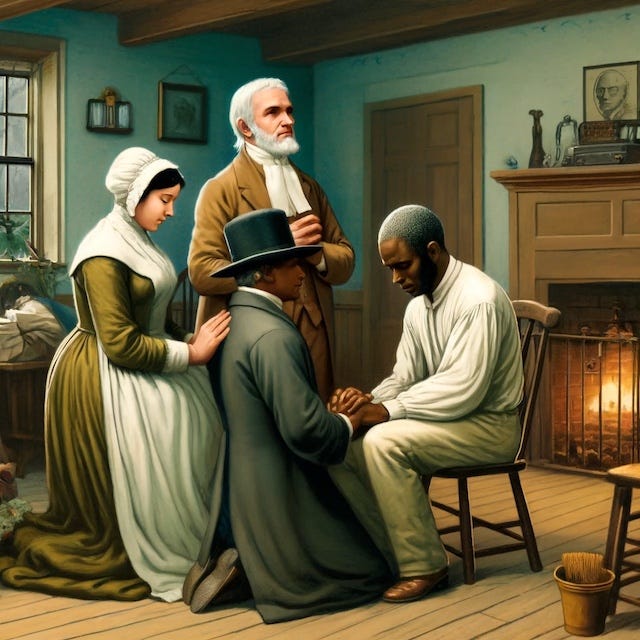
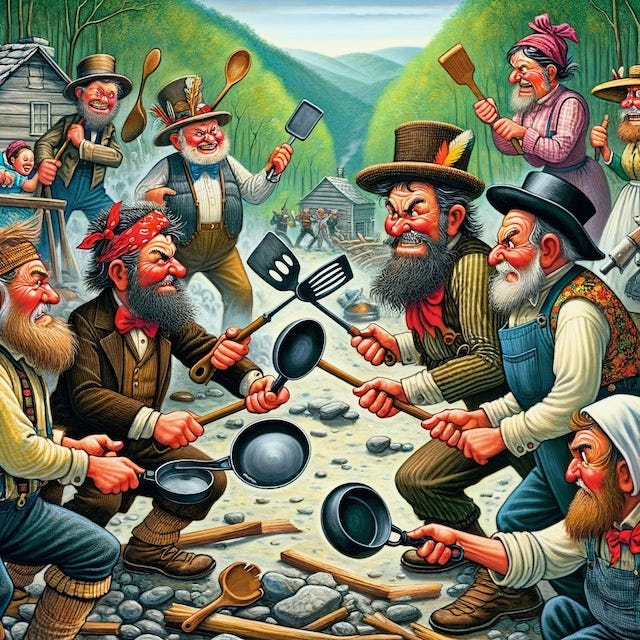
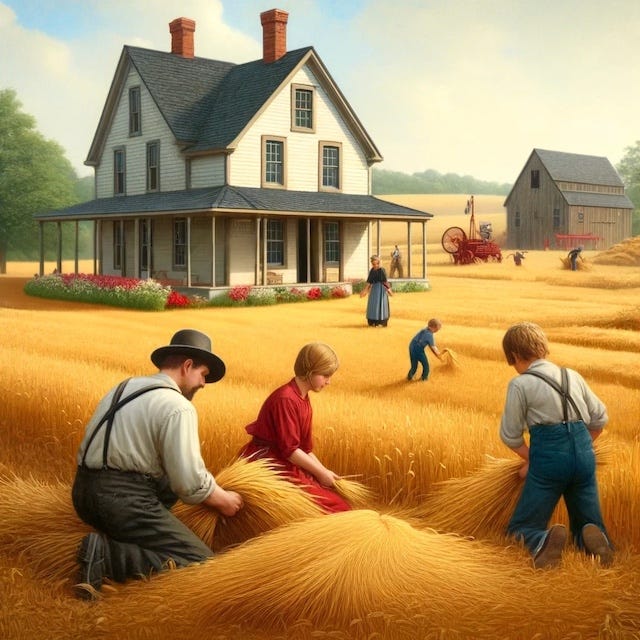
I think the answer to why so many libertarians have become Trumpists is a bit more straightforward than you're hypothesizing. Over the last decade or so, culture war differences have come to dominate American political thinking. The two "sides" define themselves more by those culture war differences than they do policy differences. For decades prior to that, American libertarianism went with the fusionist strategy of view itself as part of the conservative/right-wing coalition, which led to an American libertarian movement made up of far more people who came from the right, and have conservative cultural leanings, than people who came from the left or have left cultural leanings. Thus when American politics realigned along those culture war differences, and deemphasized policy differences, it was predictable that many (though certainly not all) libertarians would be drawn to the contemporary avatar of right-wing cultural preferences, even if he's not great on the whole liberty thing.
On MAGAification of libertarian institutions: How much of the MAGAification is genuine enthusiasm or support for Trump and his potential administration, and how much is a more pragmatic acceptance of the Republican party as preferable to Joe Biden's administration and the Democratic party at large. All of that assuming the Libertarian party as a waste of time.